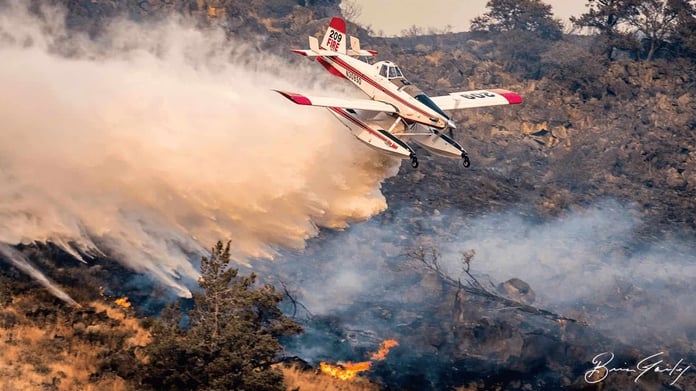Aerial firefighting is rapidly modernising, as new technology becomes readily available to operators worldwide. These developments are twofold; technology that helps firefighters access more risk-heavy environments, but also technology that helps to keep people safe in doing so — including offering data-rich information back to firefighters to improve processes. As an approved tracking provider for aerial firefighting across Australia, New Zealand, USA, Canada and Latin America, TracPlus knows first-hand how beneficial data can be to enhance safety, but also fast track learnings and efficiencies.
Increasingly, firefighters are being provided data data-rich information at the click of a button.
Here’s a look at what changes we can see for aerial firefighting in 2020 as a result of better, bigger and more beneficial data and technology.
Drones & UAV
Pilot-Optional Helicopters
Improved Weather Analysis

Drones & UAV’s
An avenue that is growing in popularity is the integration of drones into the aerial firefighting industry. Drones have the ability to aid fire suppression in the future, yet the big question is how to implement them?
Drones are easy to operate and can manoeuvre in places that helicopters and planes cannot, and give firefighters the ability to partake in fire surveillance before they send all their assets out to one area.
In addition to surveillance, they have the ability for managers to assess and find safe entry/exit points for their crews. More advanced camera systems can also be integrated into drones, which introduces the use of thermal cameras for hotspot detection — danger zones that are not necessarily visible to the naked eye. Having this insight gives firefighters a jumpstart, and can assist in limiting the progress of a fire.
To keep operators safe, however, the tracking and coordination of each drone must be considered just as any other manned aircraft would be. Due to some regulatory issues and points of differences, many pilots fear that drones could fly and cause harm. With the sound integration of drones into airspace, we hope that day pilots can fully trust that drones are keeping them safe, not posing a risk.
We have already seen the effectiveness of firefighting drones in urban environments, with drones playing a large role in the assessment and planning of the containment Notre Dame blaze in 2019. We look forward to seeing the growth of drones for further firefighting situations.

Pilot-Optional Helicopters
A continuation of drones in firefighting is the unmanned firefighting aircraft, giving helicopters drone-like abilities — without the risk to those sitting in the seat. In a collaboration between Lockheed Martin and Kaman Aerospace, the businesses have developed and tested an automated firefighting aircraft based on their existing KMAX model.
This kind of logistical system allows agencies to operate with pace and flexibility.
Unmanned aircraft would allow managers to move their operating assets around a country to get to fire-affected areas, and when they reach a fire zone, managers can send in unmanned aircraft to operate. This approach takes away the risk of the loss of human life (when operating aircraft).
This ‘trick’ approach to aircraft means that you can take any existing KMAX aircraft and give it the ability to fly unmanned, a similar strategy to Tesla when updating their vehicles.
In testing and development flights, the KMAX helicopter was able to identify and relay fire data and then find a water source a reload its water bucket. Following the bucket fill, the aircraft was able to be remotely piloted back to the fire area, and drop its payload. If operators were given the ability to operate unmanned, we could see a huge shift in not only aerial firefighting, but aviation as a whole.
Improved Weather Analysis
Firefighters don’t want to see pictures of the fires burning, they want vector data, information about where fires are and what they’re doing.
Analysis plays a huge role in the containment of fires. If innovators can find a solution that allows firefighters to get ahead of the weather trends, operators may be able to betters strategise ahead of time.
The University of California is looking into the use of advanced computer modelling to help better understand extreme fire weather. These systems will help agencies gain an understanding of how natural elements flow across landscapes, such as how hot and dry winds flow over mountains and hilly terrain.
USC lab techs explained that "if we know the topography, how the shape of the landscape is going to channel wind so that they're really strong here but be blocked over there, and also which direction they'll be coming out of at a particular part of the landscape, that helps us a lot in understanding how a fire might progress in a particular situation."
Innovative technology is not likely to solve all problems with aerial firefighting. We know we have a way to go to better protect our communities.
The success, however, of reducing the risk of wildfires will be hinged on technologies working alongside communities to make processes more efficient and safe. It's about offering further insight into ways to beat wildfires before we witness a further loss of life and more damage to our ecosystem.
Aerial firefighters are using TracPlus to protect our environment and homes from damage. Demo our tracking software for extra safety.